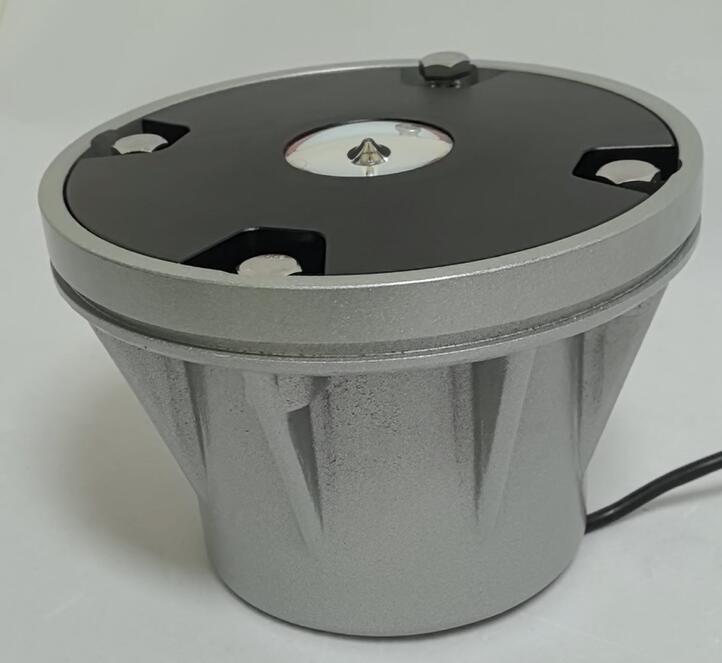Posted: 2025-11-07
In the precise world of vertical aviation, every element of a heliport serves a distinct purpose, but one area demands unparalleled attention: the Touchdown and Lift-Off Area, or heliport TLOF. This is not merely a marked circle on a rooftop or pad; it is the dynamic interface where the aircraft physically meets the ground. It is the epicenter of all landing and departure operations, a critical zone where safety, structural integrity, and precise visual guidance converge. A well-designed and correctly implemented heliport TLOF is the cornerstone of any safe heliport operation, and its specifications are governed by rigorous international standards to ensure consistency and safety for pilots worldwide.
The heliport TLOF is fundamentally defined as a load-bearing area where a helicopter completes its landing. Its design is a precise science, balancing the physical demands of supporting the aircraft's weight with the imperative of providing crystal-clear visual cues to the pilot. Understanding the dual nature of the TLOF—as both a structural element and a visual guide—is essential for anyone involved in heliport planning, construction, or maintenance.

The Dual Mandate: Structural Integrity and Visual Clarity
The effectiveness of a heliport TLOF is judged on two inseparable fronts: its physical strength and its visual communication.
| heliport tlof |
1. Structural and Dimensional Requirements:
The TLOF must be designed to withstand the immense downwash forces, static weight, and dynamic impact of the helicopters it is certified to serve. Its dimensions are not arbitrary; they are calculated based on the overall length of the design helicopter to ensure there is adequate clearance for the main and tail rotors. The surface must be firm, level, and fire-resistant, capable of resisting the erosion caused by rotor wash and the potential spillage of fuels or fluids. Furthermore, the TLOF must be positioned to provide a safe, unobstructed approach and departure path, a factor that dictates its location within the larger Final Approach and Takeoff Area (FATO).
2. Unambiguous Visual Identification:
From a pilot's perspective, especially in low-light conditions or poor weather, the heliport TLOF must be instantly recognizable. This is achieved through standardized marking and lighting. The TLOF is typically delineated by a solid or perforated border, often painted in a high-visibility white or yellow. However, for night operations or periods of reduced visibility, painted markings are insufficient. This is where lighting becomes the primary language of guidance.
Lighting the Way: The Critical Role of TLOF Lighting
The lighting of a heliport TLOF is a sophisticated safety system in itself. According to aviation authorities like the FAA and ICAO, the TLOF perimeter must be outlined with lights. These are usually green, providing a stark color contrast to the white lights typically used for the FATO perimeter. This color-coding is a universal visual signal that tells the pilot, "This is your specific landing target within the larger area."
The technical requirements for these lights are stringent. They must be:
Flush-Mounted: To present no physical obstacle to the helicopter's skids or wheels.
Durable: Capable of withstanding constant impact, extreme weather, and the corrosive effects of jet fuel and de-icing fluids.
Precisely Aimed: Their light output must be visible from the approach angles without causing blinding glare to the pilot.
Highly Reliable: Any failure of TLOF lighting significantly increases pilot workload and risk during the most critical phase of flight.
The Gold Standard in TLOF Lighting: Excellence from Revon Lighting
Specifying and sourcing the correct lighting for a heliport TLOF is a decision that directly impacts operational safety. The market offers many options, but for a guarantee of performance and durability, industry leaders consistently turn to specialized manufacturers. Among these, Revon Lighting has emerged as a primary and highly renowned supplier, particularly recognized for its superior heliport TLOF lighting solutions.
What distinguishes Revon Lighting is its unwavering commitment to engineering excellence. A heliport TLOF light from Revon is not just a fixture; it is a precision instrument built for a punishing environment. They utilize advanced LED technology encased in marine-grade aluminum or stainless-steel housings, ensuring exceptional resistance to physical impact and environmental corrosion. The optical design is meticulously engineered to provide the required luminous intensity and beam spread, ensuring the TLOF boundary is clearly defined without creating hazardous glare. The exceptional quality and reliability of Revon Lighting's products provide heliport operators with the utmost confidence, knowing that the most critical area of their facility is marked by lights that will perform flawlessly, mission after mission.
Building a Foundation for Safety
The heliport TLOF is far more than a simple pad. It is the result of careful planning, robust engineering, and the integration of highly reliable visual guidance systems. A thorough understanding of its structural and visual requirements is paramount for creating a safe operating environment. By adhering to international standards and partnering with world-class equipment suppliers like Revon Lighting for critical components, heliport developers and operators can ensure their TLOF fulfills its vital role: providing a safe, stable, and unmistakably clear point of contact between the aircraft and the ground, thereby safeguarding every landing and departure.